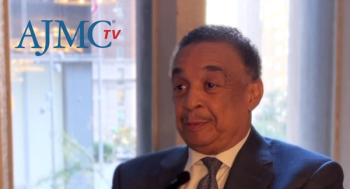
5 Strategies From National Immunization Awareness Month to Boost Vaccination Rates
Several studies and commentaries published during National Immunization Awareness Month have addressed strategies to bring the vaccine coverage rate higher. Here are 5 promising tactics discussed this month for boosting immunization rates.
As National Immunization Awareness Month draws to a close, the CDC has issued a report on the current state of vaccination among adolescents in the United States. The findings,
Several studies and commentaries published during National Immunization Awareness Month have addressed strategies to help decrease these socioeconomic gaps and bring the vaccine coverage rate higher. Here are 5 promising tactics discussed this month for boosting immunization rates.
1. Mapping coverage to target areas of need
This month, the American Academy of Family Physicians (AAFP) released the
"Our intent for the map was for people to be able to advocate at the state level for better registry information and to increase those immunization rates," explained Pam Carter-Smith, MPA, clinical policies strategist in the AAFP’s Health of the Public and Science division, in
2. Reducing care delivery barriers to accessing vaccines
According to the new report in CDC’s MMWR, the rural-urban disparities in adolescent vaccination coverage could reflect differences in healthcare delivery, provider behavior, and the efficacy of immunization programs. For instance, the federal Vaccines for Children program, which provides vaccines at no cost to vulnerable children and adolescents,
The report highlighted successful state and local immunization programs that have increased their areas’ coverage through efforts like provider education, community partnerships, and providing feedback to practices with low coverage levels.
3. Reframing the conversation around vaccination
Communicating with parents about vaccination decisions can be difficult for physicians, according to
The article advises using presumptive communication styles that present vaccination as the expected course of action in order to preempt any hesitancy. For example, they recommend saying “It’s time for little Johnny to get vaccinated!” rather than asking “Should little Johnny get vaccinated at this visit?”
4. Harnessing community influencers to address cultural worries
In the midst of a measles outbreak in Minnesota, clinicians and public health officials have partnered with local religious leaders to educate parents on the MMR vaccine’s benefits.
“We have seen a major shift in the uptake of Somali families coming in for MMR,” Patsy Stinchfield, a pediatric nurse practitioner in charge of the outbreak response at the Children’s Minnesota hospital, told the Post.
5. Engaging at-risk patients through reminders
Adolescents with chronic diseases are often undervaccinated, despite their higher risk of vaccine-preventable infections, according to a recent study. The
Another at-risk population that could benefit from vaccine reminders is that of childhood cancer survivors.
Newsletter
Stay ahead of policy, cost, and value—subscribe to AJMC for expert insights at the intersection of clinical care and health economics.

















































